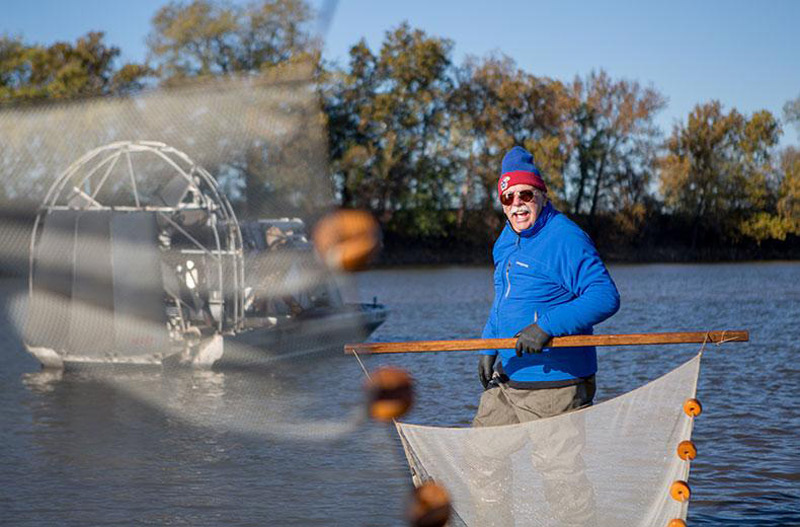Jim Thorp’s fishing expedition will be unprecedented. Over the next five years, he will lead teams of researchers on 18 rivers in the U.S. and Mongolia fishing for clues about changing world ecosystems.
Thorp, professor of ecology and evolutionary biology and senior scientist at the Kansas Biological Survey, is the lead investigator on a research project with nine universities that is funded by a $4.2 million National Science Foundation (NSF) grant.

Jim Thorp, lead investigator
The project — the largest-scale river research of its kind — has three goals:
- Study rivers in Mongolia, where temperatures are rising three times faster than the average within the North Temperate Zone, and use that information to predict how climate change will affect rivers in the United States.
- Study U.S. rivers, with their man-made dams and non-native species, as a predictor for what will happen if Mongolian rivers — currently untouched — undergo development.
- Study how the physical structure of rivers affects their ecology, and the implications for river management.
No one has ever attempted to study so many rivers in so large an area. Because rivers are largely managed within political boundaries, like states and countries, previous studies have been on much smaller scales. Thorp says that’s like trying to understand the function of the human body by studying an arm or leg.
“To study rivers you have to understand the river in its entirety, from the smallest streams to the largest channels,” Thorpe says. “I’ve had people tell me it’s not possible to do experiments in rivers. I’ve conducted cage experiments in rivers, and now we will be doing the world’s largest whole river experiments.”
U.S. rivers are rapidly changing with the climate and human disturbance. Thorp cites studies that show the loss of species in North American rivers is greater than the loss of species for most other large ecosystems.
Across the world, rivers have different issues.
“Mongolian officials are on the precipice of building dams on beautiful rivers,” Thorp says. “But they don’t have the experience predicting the environmental consequences — an area where we can contribute our knowledge.”

Dan Reuman, co-principal investigator
Thorp and his team will sample rivers stretching hundreds of miles — the Eg River in Mongolia and the Snake River in the U.S., for example — fishing out specimens of trout, water insects and algae. From the samples, researchers will be able to draw important conclusions about the species’ biodiversity, food webs, and oxygen metabolism of entire macro river systems.
If the scope of the project is unprecedented, it’s also important, Thorp says, because the two continents may help reveal the future of the other.
In 2014, Jim Thorp used a $20,000 KU grant to bring together ecologists from the United States, Mongolia and France. The NSF grant proposal stemmed from this global concept-focused workshop. KU is the lead institution on the grant, headed by Thorp and co-principal investigator Dan Reuman, associate professor of ecology and evolutionary biology. Other participating universities are Kansas State; Ball State; Drexel; Rutgers; South Dakota School of Mines and Technology; University of Nevada, Reno; Wayne State College; and the National University of Mongolia.
Story/photos: University of Kansas





